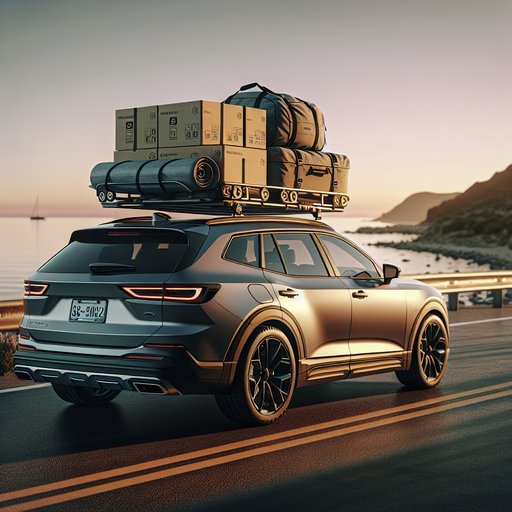
We spent a week with a 2024 Subaru Outback (2.5L, AWD, integrated crossbars) to quantify real cargo capacity using standard boxes, assess roof-rack ease, and evaluate load-securing hardware beyond brochure specs.
Our test car is a 2024 Subaru Outback Premium with the naturally aspirated 2.5-liter flat-four (182 hp, CVT, AWD). Subaru quotes 32.6 cu ft of cargo space behind the second row and 75.6 cu ft with the seats folded. Ground clearance is 8.7 inches, and the car includes Subaru’s built-in swing-out crossbars (non-Wilderness models). Testing took place over three days with ambient temps of 58–74°F.
We measured the cargo area with a tape and standardized 12x12x12-inch corrugated cartons (1.0 cu ft each), loading on a level surface. Baseline dimensions: floor length to seatbacks 41.5 in, width between wheel wells 43.3 in, height to headliner at the hatch opening 30.5 in. We removed the cargo cover for all tests and kept the driver’s seat set for a 5'11" driver. Seats up, to the seatback height (preserving rear visibility), we fit 20 boxes (20 cu ft): 3 across x 3 deep x 2 high, plus two tucked in the side pockets.
Loading to the headliner—but short of pressing on the glass and without deforming boxes—yielded 26 boxes (26 cu ft). That’s lower than the SAE-rated 32.6 cu ft because rigid cubes can’t occupy tapered corners and the sloped hatch trims the top rear layer. Seats folded, we achieved 38 boxes (38 cu ft) to the window line and 44 boxes (44 cu ft) to the headliner, arranged 3 across x 6 deep with two full layers and a partial third toward the front. Maximum depth to the center console is 76.5 in with the front seats in a normal position.
The load floor is nearly flat; a slight rise at the seat hinge requires flipping heavy items rather than sliding them straight through. Roof rack ease: the integrated crossbars swing out from the side rails in under a minute, no tools. Usable crossbar spread measured 29–39 inches. We mounted a Yakima SkyBox 16 (clamp-style feet) in three minutes solo; no adapters needed.
At 65 mph, cabin noise rose by 2–3 dBA with empty bars and by ~4 dBA with the box; fuel economy dropped from 30.8 to 29.6 mpg at a steady 70 mph. Subaru rates the standard crossbars at a 150-lb dynamic load; for heavier rooftop tents you’ll want the Wilderness model’s beefier rails. Side-step height makes strapping bikes or skis manageable without a stool for anyone ~5'10" and up. Load securing: four metal tie-down loops (one near each corner) take 1-inch ratchet-strap hooks cleanly and showed no flex under a 200-lb static tug.
Two mid-height hooks handle grocery bags, and the right wall has a 12V outlet. Remote seatback releases in the cargo area speed conversions; the 60/40 split allows a bike to fit on the 60 side with the front wheel off while still carrying a passenger. The grippy carpet and low liftover help keep bins stable; add a cargo net to control tall, single-box stacks. Overall, the Outback translates its brochure numbers into genuinely usable space.
If you pack with cube-friendly gear (coolers, storage totes), count on about 26 cu ft behind the rear seats and 44 cu ft seats folded, plus an easy-on, easy-off roof solution for bulky or messy items. For frequent rooftop loads over 150 lb, opt for the Wilderness; otherwise, the standard setup is the most hassle-free in the class.












